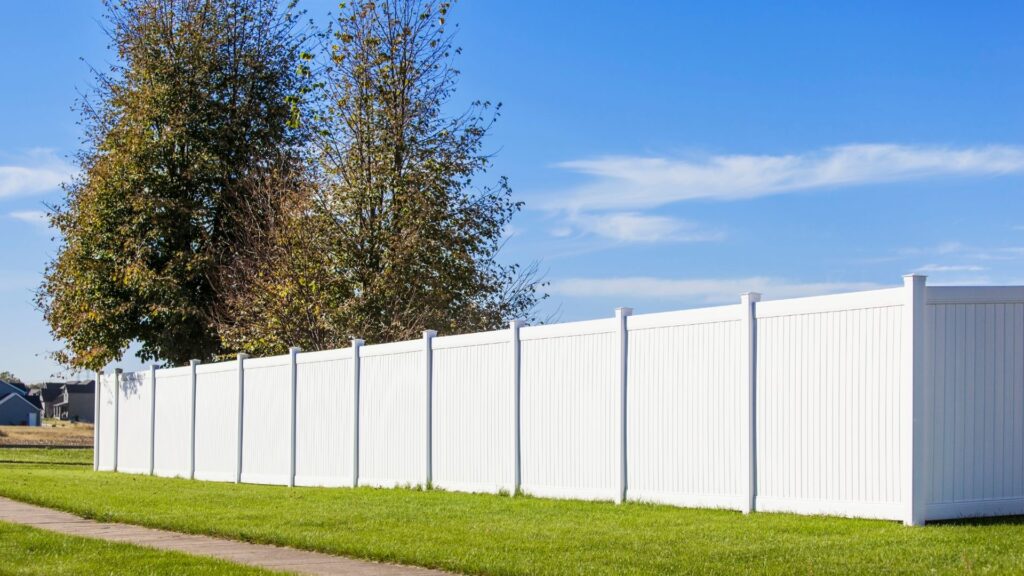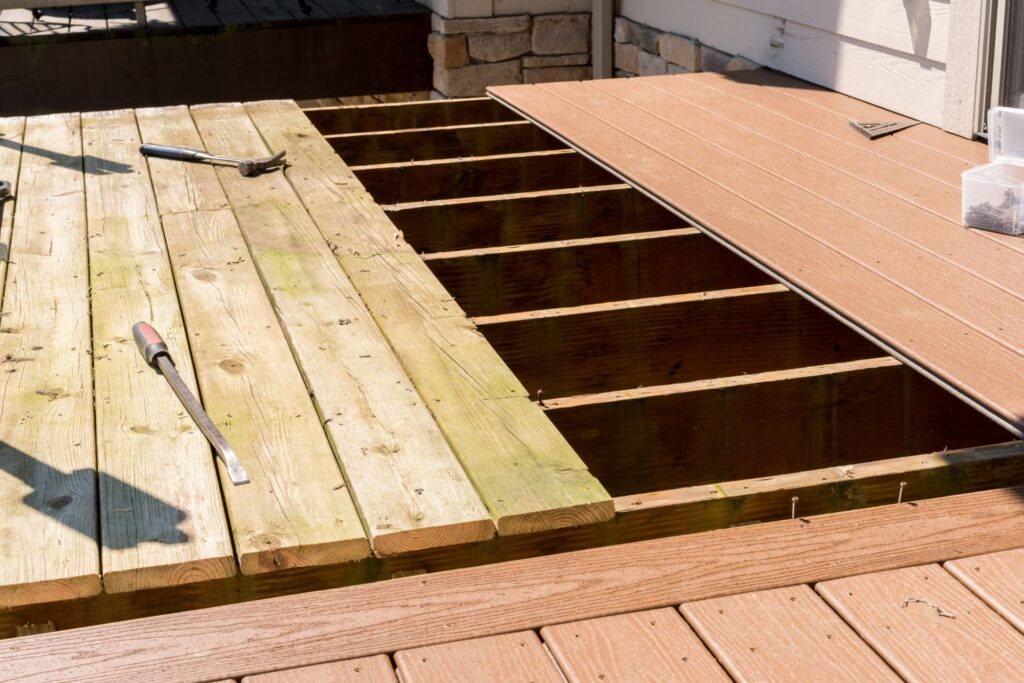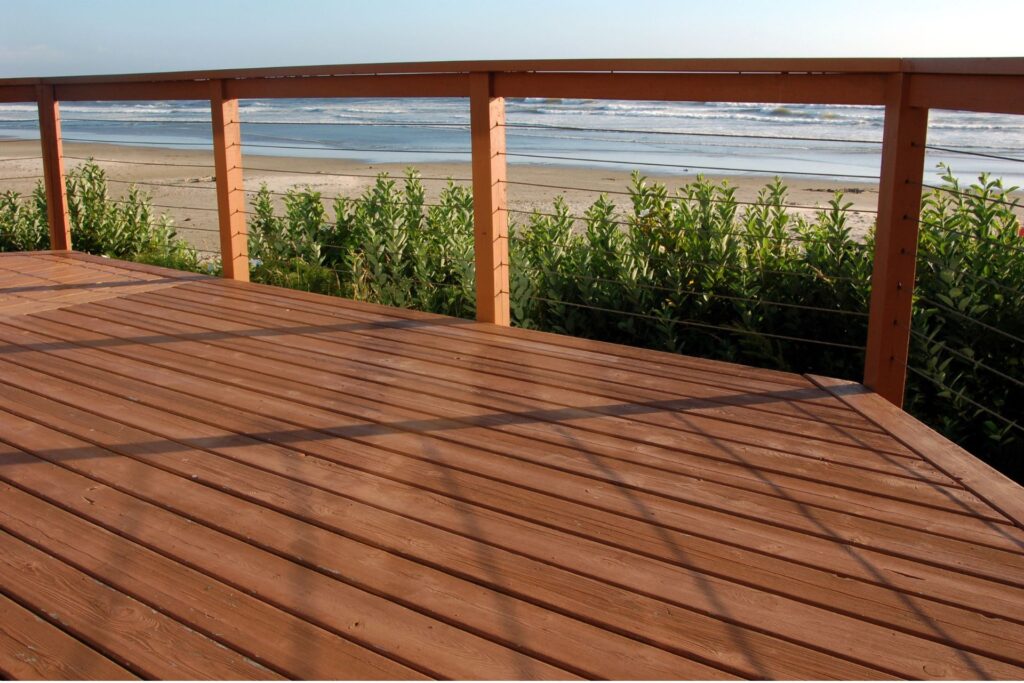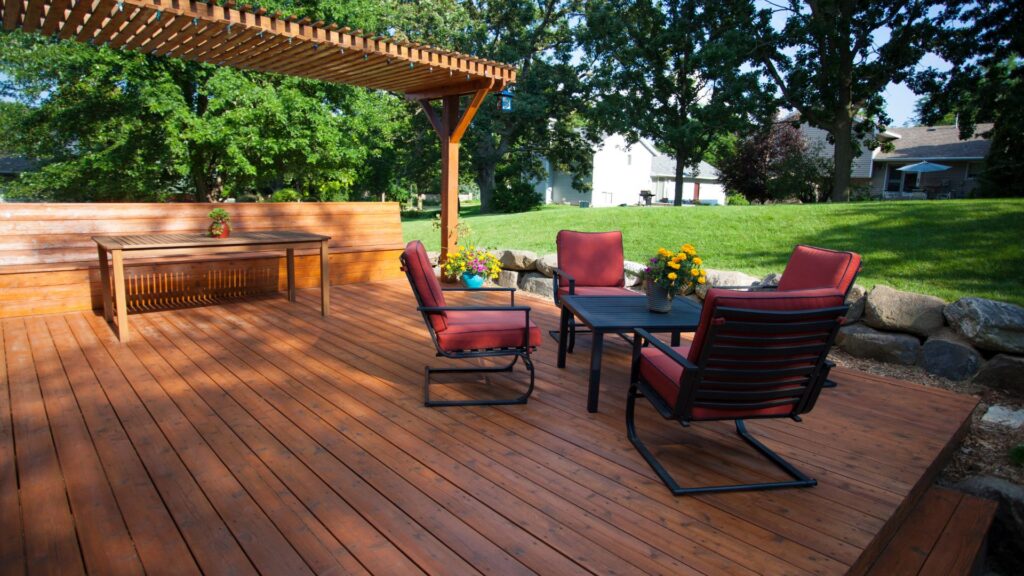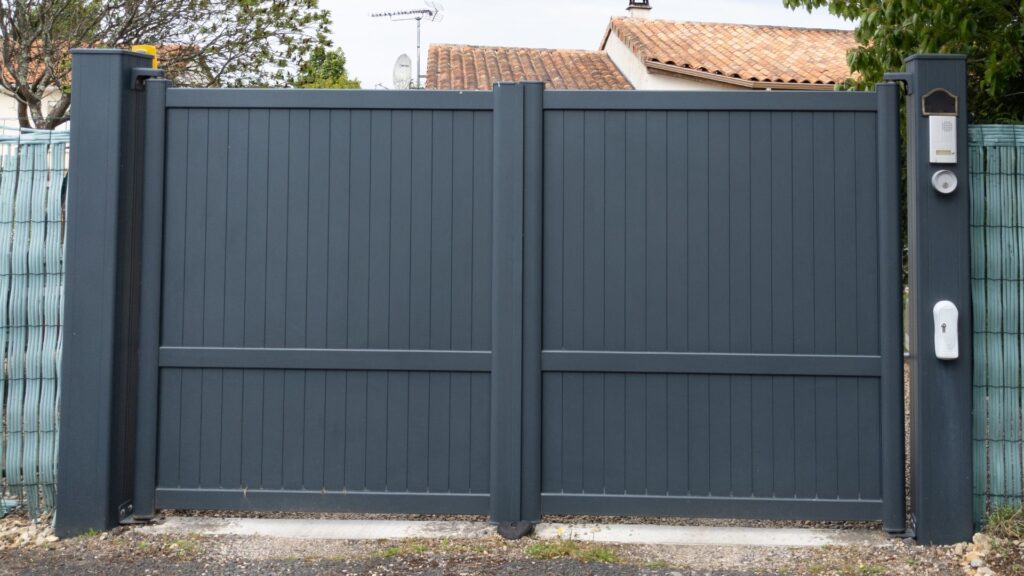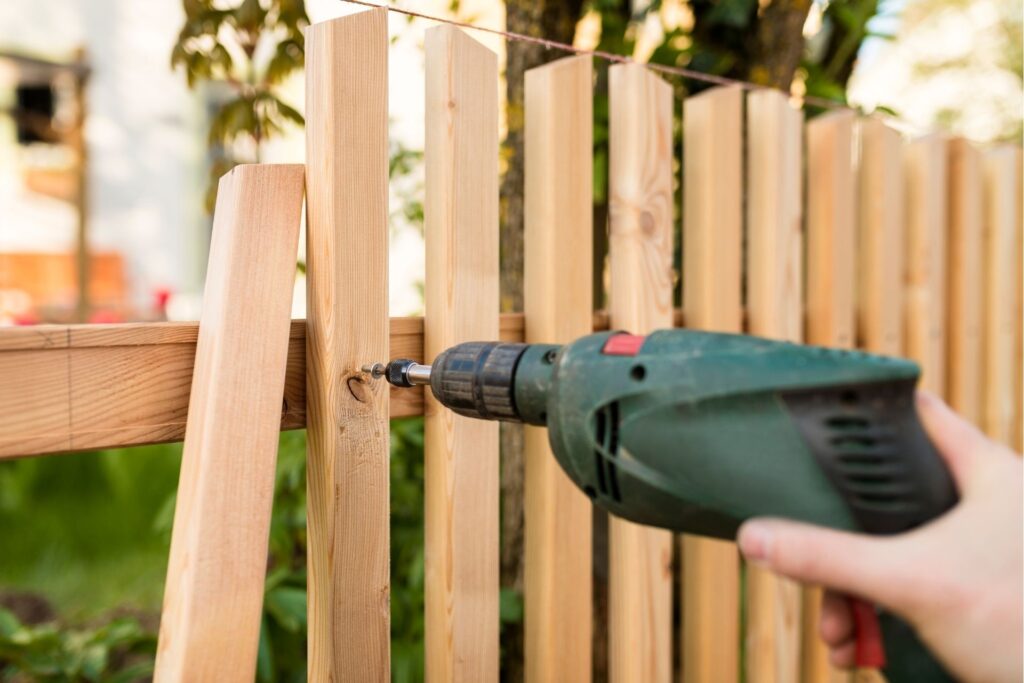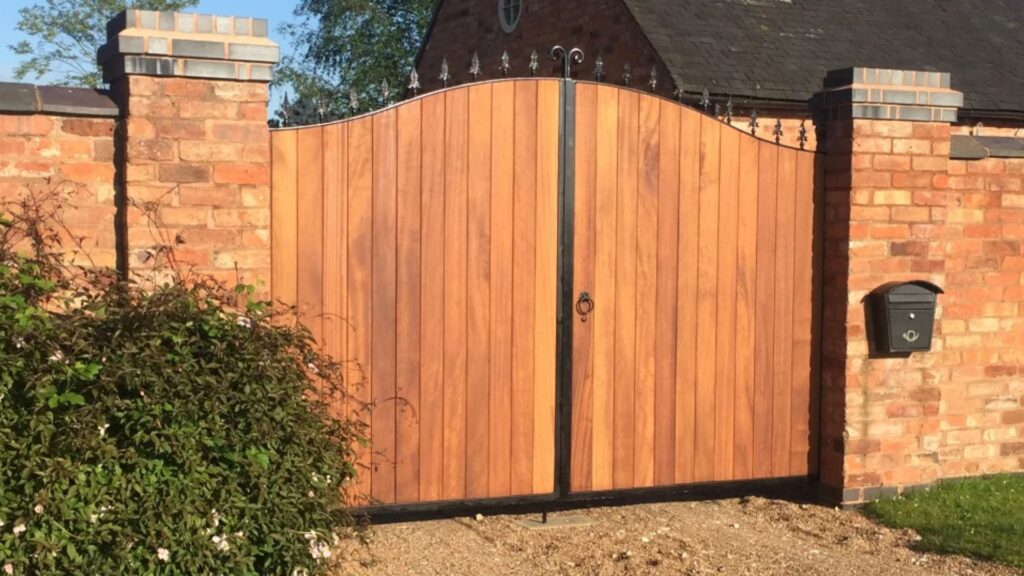Welcome to your comprehensive guide on NZ’s unitary plan height restrictions for fences! Whether you’re looking to boost your home’s privacy, add a touch of security, or simply enhance its curb appeal, understanding the rules around how high you can build your fence is crucial. Many homeowners are unaware of the specific regulations that govern fence heights, and failing to comply could lead to unnecessary fines or frustrating rework. In this post, we’ll dive into the key aspects of the Unitary Plan, clarify what it means for your fencing project, and offer practical advice on how to ensure your fence not only looks great but also stays within the law. Let’s get started!
The NZ Unitary Plan height restrictions for fences generally allow fences up to 1.8 meters high on residential properties without requiring consent. However, front yard fences may have lower height limits, typically around 1.2 meters, to maintain street visibility and aesthetics. Corner properties, fences near driveways, and those on shared boundaries may face additional restrictions. Always check with your local council to ensure compliance with specific zoning rules and avoid penalties.
Table of Contents
What Is NZ’s Unitary Plan?
The Unitary Plan is a fundamental component in the development and management of Auckland, New Zealand’s largest and fastest-growing city. It provides a blueprint for how the city will grow and evolve, ensuring that urban expansion aligns with sustainable development, environmental protection, and the wellbeing of its communities. The plan balances residential, commercial, and industrial needs, guiding everything from housing density to environmental safeguards. One key area the Unitary Plan addresses is building regulations, which include specific rules about fence heights. Let’s explore what the Unitary Plan is and why it places restrictions on fences in different areas.
1. Definition of the Unitary Plan
Auckland’s Unitary Plan is essentially a citywide regulatory framework designed to guide growth, development, and land use in the region. Adopted by the Auckland Council, it outlines what can be built, where it can be built, and how Auckland’s physical landscape will change over time.
At its core, the Unitary Plan is intended to manage the city’s expansion while preserving its natural resources and ensuring that communities are sustainable and livable. For both residential and commercial areas, the plan establishes specific guidelines that dictate the height and placement of buildings and structures—fences included.
By setting these guidelines, the plan ensures that new developments fit harmoniously within their environment, addressing practical concerns like privacy, aesthetics, and safety. In short, the Unitary Plan is Auckland’s rulebook for creating a cohesive, well-functioning urban environment.
2. Why Height Restrictions for Fences Exist
Fence height restrictions play a crucial role in ensuring that urban spaces remain visually appealing and safe. The Auckland Unitary Plan includes specific rules on fence heights to maintain a balance between privacy, neighborhood harmony, and safety.
- Safety Concerns: Tall fences may create blind spots or hide potential dangers, particularly on corner properties where visibility for drivers and pedestrians is essential. Restrictions help reduce the risk of accidents by ensuring that fences don’t obstruct views of the road or footpath.
- Visual Aesthetics: The character of a neighborhood can be heavily influenced by the height and design of fences. By limiting fence heights, the Unitary Plan promotes a visually consistent streetscape, preventing excessively tall or unsightly fences from dominating the landscape.
- Neighborhood Harmony: Fences can affect how a community feels and functions. Overly high fences might foster a sense of isolation or territorial division, while lower, well-designed fences encourage a more open and welcoming atmosphere. Restrictions help maintain a sense of unity among neighboring properties.
- Privacy Balance: Fence height regulations aim to strike a balance between offering homeowners privacy and preventing them from erecting barriers that significantly overshadow neighboring properties.
- Preventing Shading: Tall fences can block sunlight and cast unwanted shadows over neighboring gardens or homes. Height limits are designed to prevent this, ensuring that one property’s fencing doesn’t negatively impact the enjoyment of another’s outdoor space.
These restrictions vary depending on the zoning of the area, with different rules for residential, rural, and business zones. Each zone has unique requirements to reflect its specific needs—residential zones might prioritize privacy and community interaction, while business zones may focus more on security and function.
3. Auckland-Specific Focus
While Auckland’s Unitary Plan sets the standard for the city, other regions across New Zealand may have their own similar plans, tailored to their local needs and environments. These plans will often include their own rules on fence heights and building regulations, but they might differ in detail based on the characteristics of each region.
If you live outside Auckland or own property in another part of New Zealand, it’s essential to check with your local council for the specific regulations that apply in your area. Many councils make their building guidelines, including fence height restrictions, easily accessible online to ensure that homeowners and developers stay informed and compliant with local rules.
In conclusion, Auckland’s Unitary Plan is a critical tool for managing urban growth, ensuring that the city develops in a way that is both functional and visually pleasing. By implementing fence height restrictions, the plan safeguards neighborhood aesthetics, enhances safety, and maintains a delicate balance between privacy and openness. For property owners, understanding these guidelines is essential for creating a space that aligns with both personal preferences and community standards.
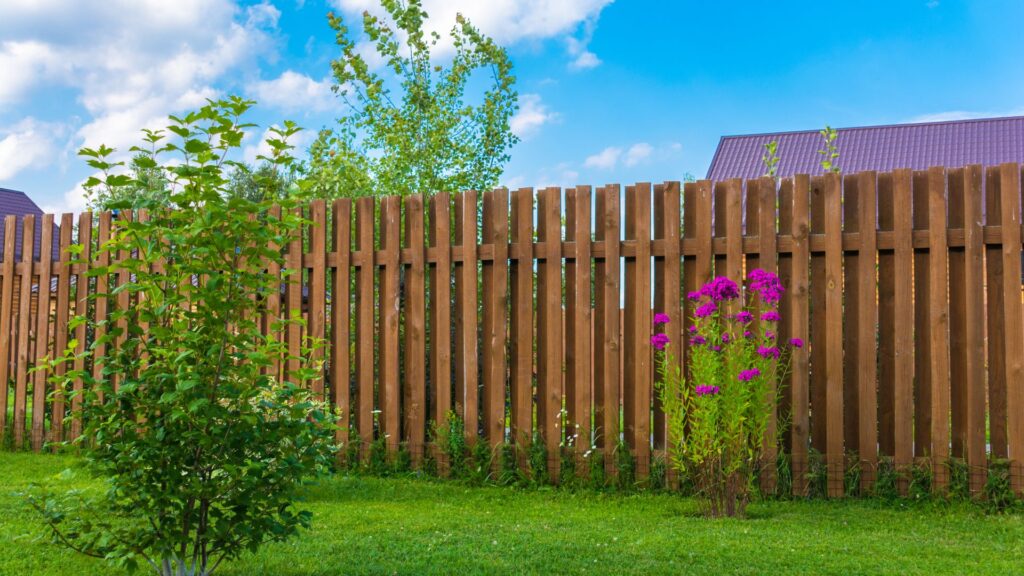
Understanding Fence Height Restrictions
When building a fence on your property, it’s essential to understand the various height restrictions that may apply to avoid any legal or safety issues. Fence height rules exist to maintain neighborhood aesthetics, ensure safety, and prevent disputes between neighbors. In this section, we’ll break down the general guidelines, special cases, and key considerations that can affect your fence’s allowable height.
1. General Fence Height Limits
In most residential areas, the general rule is that fences can be up to 1.8 meters (approximately 6 feet) tall without requiring special permission or council approval. This height is common for backyards and side yards, providing enough privacy and security for homeowners. However, it’s important to note that there are exceptions to this rule, especially when fences are placed near property boundaries that face public streets or pedestrian pathways. In these cases, local councils often enforce stricter rules to preserve sightlines and ensure that the fence doesn’t obstruct views or become a hazard.
2. Front Yard Fences vs. Side and Rear Fences
The location of your fence on the property plays a significant role in determining its allowable height. Fences located in the front yard typically have stricter height restrictions, often limited to 1.2 meters (about 4 feet). The reasoning behind this is to maintain an open and welcoming appearance from the street, as well as to ensure clear visibility for pedestrians and drivers. On the other hand, side and rear fences, which offer more privacy and security, are generally allowed to be taller, often up to 1.8 meters as mentioned earlier. This distinction helps balance the need for privacy with the desire for an open and safe neighborhood environment.
3. Corner Properties and Road Frontages
If you own a corner property, there are additional factors to consider when it comes to fence height. Fences near intersections, driveways, or road frontages often face stricter restrictions to maintain visibility and ensure road safety. For example, fences at intersections may need to be kept low (under 1 meter) to prevent obstructing the view of oncoming traffic or pedestrians. These rules are especially important for corner lots because impaired visibility can pose significant risks for both drivers and pedestrians, leading to accidents. Therefore, always check with your local council for any specific guidelines that apply to properties near road intersections or high-traffic areas.
4. Shared Boundary Fences
When you’re building a fence along a shared boundary with a neighbor, different regulations may apply. In many cases, both property owners will need to agree on the fence’s height and design, especially if the fence exceeds the standard height limit of 1.8 meters. This type of fence often requires a cooperative approach, involving consultation with your neighbor to avoid disputes. In some regions, local laws mandate that neighbors equally share the costs of building or maintaining a boundary fence, particularly when it meets the standard guidelines. However, if you plan to build a higher fence or something more unique, it’s a good idea to get written agreement from your neighbor to avoid future conflicts.
5. Retaining Walls and Fences Combined
A fence built on top of a retaining wall adds another layer of complexity. In many cases, the height restriction applies to the combined height of both the fence and the retaining wall. For example, if you have a retaining wall that is 1 meter tall and you plan to add a fence on top of it, the total height might not exceed the standard limits set by local councils. This means that the design of your fence could be restricted depending on the height of the retaining wall, which could impact your privacy and security decisions. Be sure to consult local regulations for combined structures to ensure that you stay within legal limits and avoid any penalties.
Understanding fence height restrictions is crucial to ensure that your fencing project goes smoothly and remains compliant with local laws. The key factors to consider include general height limits, differences between front and back yard fencing, special regulations for corner properties, and shared boundary agreements with neighbors. Additionally, if you’re working with retaining walls, remember that the combined height of the wall and fence may be regulated. Always check with your local council or a fencing professional before starting your project to make sure you’re following the right guidelines. This will help you avoid costly mistakes and ensure that your fence meets both functional and legal requirements.

Getting Approval For Fences Taller Than The Allowed Height
1. When Do You Need a Resource Consent?
If you’re considering building a fence taller than the local regulations permit, you’ll likely need to apply for resource consent from your local council. Generally, councils have specific height restrictions—often around 1.8 meters for residential areas—and any fence exceeding this limit requires official approval. The main reason for this process is to ensure that tall structures, like fences, don’t negatively impact the surrounding neighborhood, including your neighbors’ views, sunlight, and the overall street appearance.
How to Apply for Resource Consent:
- Step 1: Confirm Local Regulations – Check with your local council to confirm the height restrictions in your area.
- Step 2: Prepare Your Application – Gather necessary documents, including detailed plans of the proposed fence, location, and dimensions.
- Step 3: Justify the Need – Be ready to explain why you need a taller fence. Common reasons include enhanced privacy, security concerns, or noise reduction.
- Step 4: Submit the Application – Submit the resource consent application to your local council. Ensure that all required documents are included to avoid delays.
- Step 5: Await Council Review – The council will assess the impact of your proposed fence on the neighborhood and make a decision.
Factors the council will consider include how the fence affects neighbors, street visibility, and whether it aligns with the character of the area. A well-prepared application can increase the chances of approval, so take the time to get it right.
2. Factors Influencing Consent Approval
The approval of your resource consent hinges on several key factors. Councils aim to balance individual needs with community interests, so they will carefully evaluate how your proposed fence might affect the broader environment. Key factors include:
- Neighborhood Character – Does the fence fit with the overall look of the area? A very high or imposing structure might clash with the aesthetic of your street.
- Shading of Neighboring Properties – Will your fence cast a shadow over a neighbor’s garden or home, blocking sunlight? Councils take potential shading issues seriously, as it can significantly affect a neighbor’s enjoyment of their property.
- Impact on Visibility – Fences near roads or intersections must not obstruct drivers’ visibility. Safety concerns are paramount, so if your fence could block sightlines, it might be rejected or need adjustments.
- Privacy and Security – Taller fences often provide enhanced privacy, which can be a valid reason for consent approval. Similarly, if your property requires additional security due to its location or other factors, this can also be a compelling justification.
By addressing these considerations in your application, you’ll demonstrate to the council that you’ve thought about the potential impacts of your fence on the surrounding area.
3. Tips for Navigating the Process
Navigating the resource consent process may seem daunting, but with the right approach, you can improve your chances of a smooth and successful outcome. Here are some tips to help you through:
- Work Closely with Your Council – Don’t hesitate to contact your local council early in the process. Many councils offer pre-application meetings, which can provide valuable feedback and help you understand the requirements.
- Prepare Detailed Documentation – Having thorough and well-organized documentation is crucial. This includes site plans, drawings, and any other relevant information that can help justify your request.
- Hire a Professional Designer or Architect – If you’re planning a particularly large or complex fence, consider working with a designer or architect. They can help create a proposal that is both functional and aesthetically pleasing, increasing your chances of approval.
- Provide Clear Justifications – Make sure you have a clear reason for needing a taller fence. Whether it’s for privacy, security, or noise reduction, explain why a standard-height fence won’t suffice. Including real-life examples of how the taller fence will benefit you can strengthen your case.
- Consult with Your Neighbors – It’s a good idea to speak with your neighbors before applying for consent. If they support your proposal, this can positively influence the council’s decision. Their approval, or lack of objections, can significantly reduce the likelihood of disputes.
By following these steps and being proactive in your approach, you can make the resource consent process less stressful and improve your chances of getting approval for your taller fence.
This approach helps to ensure your fence enhances your property without creating unnecessary issues with neighbors or the local council.
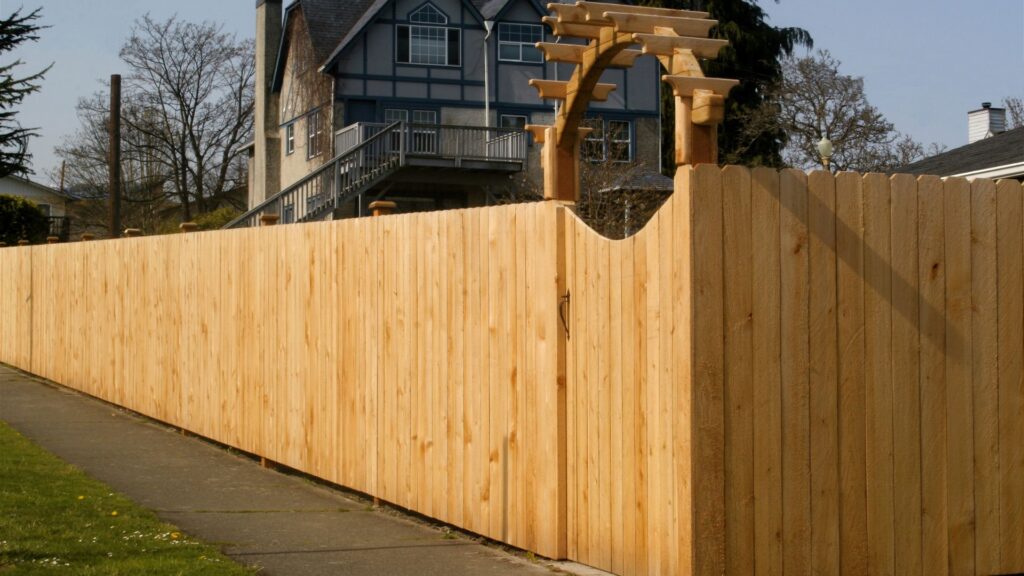
Common Mistakes And How To Avoid Them
When it comes to building a fence on your property, it’s easy to get excited about creating a new look or adding some much-needed privacy. However, many homeowners make common mistakes that can lead to fines, disputes, or even the need to tear down the fence altogether. Understanding these pitfalls and how to avoid them can save you both time and money.
1. Building Without Checking Local Regulations
One of the most frequent errors homeowners make is assuming that fence height restrictions are simple and the same everywhere. In reality, each local council has its own set of rules regarding how tall your fence can be, where it can be placed, and what materials can be used. Failing to verify these regulations with your local council can result in costly penalties or even an order to remove the fence.
To avoid this mistake, always check your local council’s fencing regulations before starting any work. Many councils have online resources or easy-to-access guidelines, making it simple to ensure your plans align with local standards. If you’re unsure, contact the council directly for clarification.
2. Ignoring Boundary Fence Requirements
Another common mistake is neglecting to involve your neighbor when building a boundary fence. Fences that sit on or near property lines often require consultation with the adjoining property owner. Many regions have laws that dictate shared responsibility for boundary fences, including costs and maintenance.
By not consulting your neighbor, you run the risk of creating tension or, worse, being forced to remove or modify the fence if it doesn’t meet mutual agreements or legal standards. Always communicate with your neighbor early in the process and consider drafting a written agreement to avoid any misunderstandings down the road.
3. Not Factoring in Retaining Walls
Many homeowners overlook the impact of retaining walls when planning a fence, especially when these walls are near property boundaries. The height of both the retaining wall and the fence are often combined when determining height restrictions. Failing to consider this can easily push your total fence height over the allowed limit, resulting in a violation.
To prevent this, it’s crucial to take into account the height of any retaining walls when designing your fence. Make sure the combined height adheres to your local council’s regulations, as exceeding these limits can result in penalties or the need to redesign your project.
4. Inconsistent Fence Design
Even when a fence meets technical height regulations, it can still be out of place if it doesn’t match the overall character of the neighborhood. For instance, building an ultra-modern tall fence in a heritage area can disrupt the aesthetic of the street and even draw complaints from neighbors or your local planning authority.
To avoid this, take time to consider the style of fences around your neighborhood. Choose materials and designs that complement the existing aesthetic and fit naturally into the surrounding environment. This not only helps to avoid disputes but can also increase the value of your property by enhancing its curb appeal.
In summary, building a fence involves more than just picking out materials and hiring a contractor. By taking the time to check regulations, involve your neighbors, account for retaining walls, and choose a design that fits with your neighborhood, you can avoid common mistakes and ensure your project runs smoothly from start to finish.
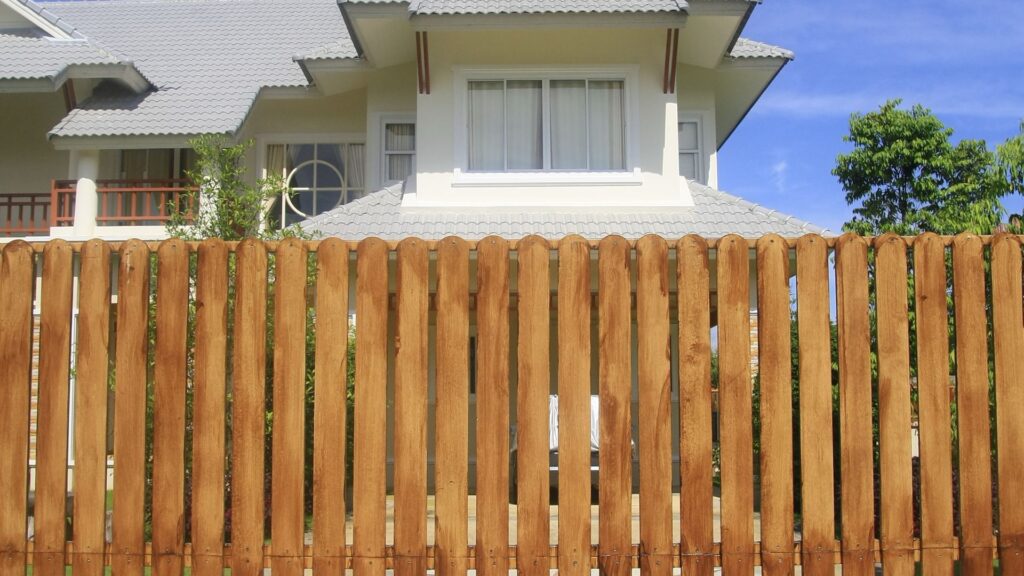
Practical Tips For Ensuring Compliance
When planning to install a new fence on your property, ensuring compliance with local regulations is crucial. Missteps can lead to costly legal issues, strained neighborly relations, and potentially having to redo the work. Below are four practical tips to help you navigate the process smoothly, avoid common pitfalls, and maintain harmony in your community.
1. Consult Your Local Council Before You Start
Before you break ground or make any investment in fencing materials, always consult with your local council or relevant authority. Every municipality has its own set of rules and guidelines regarding the height, design, and placement of fences. Failing to comply could result in fines or being required to take down your fence. By checking with the council first, you ensure that your fence project aligns with zoning laws, local ordinances, and any restrictions specific to your neighborhood.
- Why this matters: Many homeowners make the mistake of skipping this step, which can lead to unnecessary delays and increased costs if changes are required after the project begins. Early consultation allows you to plan effectively and prevents any surprises down the road.
2. Consideration for Neighbors
If your new fence is being erected on a shared boundary, it’s important to involve your neighbors in the discussion. Fences can significantly impact property appearance and even privacy, so it’s always a good idea to have an open dialogue. This can help address any concerns they might have about the height, material, or look of the fence.
- Pro tip: While you may not be legally required to get their approval, fostering goodwill by involving them in the process can prevent future disputes and maintain a positive relationship. A simple conversation upfront can save both parties from potential conflicts later.
3. Hiring a Professional
For more complex fencing projects, particularly those involving large properties, unusual terrain, or strict aesthetic requirements, it’s often worth the investment to hire a professional. Surveyors, landscape architects, or fencing contractors can offer invaluable expertise to ensure that your fence not only looks good but also complies with local laws. These professionals can also help you navigate any boundary disputes and ensure that the fence is constructed exactly where it should be.
4. Using Online Resources and Tools
Many local councils offer online tools that can be immensely helpful when planning your fence. These resources often allow homeowners to input their property details and receive tailored guidance on height restrictions, setback rules, and any special fencing requirements in their area. Some councils even provide visual aids to help you understand what is and isn’t allowed.
- Actionable tip: Take advantage of these resources. They can save you time and provide clarity, especially if you’re unfamiliar with local regulations. This also ensures that your fence complies with the rules without the need for back-and-forth communication with the council.
By following these practical tips, you can ensure that your fence project is compliant, aesthetically pleasing, and does not cause any unnecessary friction with neighbors or authorities. Proper planning and a little foresight can go a long way in making your fencing project a smooth and successful endeavor.

What Happens If You Break The Rules?
Building a fence might seem straightforward, but like any construction project, it comes with a set of rules. Ignoring these guidelines can lead to serious consequences that could affect your property, finances, and peace of mind. Let’s dive into what could happen if your fence doesn’t comply with regulations and what you can do if your fence is too tall.
1. Consequences of Non-Compliance
When it comes to local zoning laws or HOA guidelines, non-compliance isn’t something to be taken lightly. Authorities have the power to impose penalties, which can vary based on your location and the severity of the violation. Here’s what you might face if your fence doesn’t meet the rules:
- Fines: One of the most common penalties is a monetary fine. These fines can start small but may increase significantly if the violation continues or if the authorities deem the infraction serious.
- Legal Action: In some cases, non-compliance may escalate to legal action. Depending on your area’s regulations, ignoring warnings could lead to court orders, which can be both time-consuming and expensive.
- Forced Modifications: If your fence is deemed non-compliant, you may be required to modify it. This could mean lowering the height, changing the materials, or even relocating it if it’s encroaching on public space or neighboring properties.
- Removal at Your Expense: The worst-case scenario? You may be forced to take down the fence entirely, often at your own expense. If the fence significantly violates building codes or local regulations, authorities can mandate its removal, leaving you with both the cost and the hassle of correcting the issue.
To avoid these headaches, it’s essential to familiarize yourself with local regulations before starting any construction. Ignorance of the law is rarely accepted as an excuse, and the penalties can quickly add up.
2. What to Do if Your Fence Is Too Tall
So, what if you’ve already built the fence and realize it’s taller than allowed? Don’t panic just yet—there are a few steps you can take to resolve the issue.
- Check Your Local Regulations: The first step is to thoroughly review the local zoning laws or HOA guidelines. These rules typically specify the maximum allowable height for fences, often differentiating between front, side, and backyards.
- Apply for Retrospective Consent: In some cases, you may be able to apply for retrospective consent. This is essentially a request for approval after the fact. While not guaranteed, this could allow you to keep your fence as-is, provided the authorities don’t view it as a safety concern or eyesore.
- Reduce the Height: If retrospective consent isn’t an option, you’ll likely need to reduce the height of your fence. Depending on the construction, this could involve trimming the fence down or replacing certain sections. While it’s an extra expense, it’s far less costly than a fine or being forced to remove the entire structure.
- Consult a Professional: If you’re unsure about the best course of action, consider consulting a contractor or local building expert. They can provide advice on modifying your fence to meet regulations or navigating the process of applying for consent.
It’s essential to act quickly once you realize there’s an issue. Proactively addressing the problem not only saves you from further penalties but also demonstrates goodwill to your local authorities or HOA.
In conclusion, adhering to fence regulations is crucial for avoiding fines, legal action, or forced removal. If your fence is too tall, exploring options like retrospective consent or height reduction can save you a lot of trouble down the road. Always ensure you’re informed before you build to protect your property and your wallet!
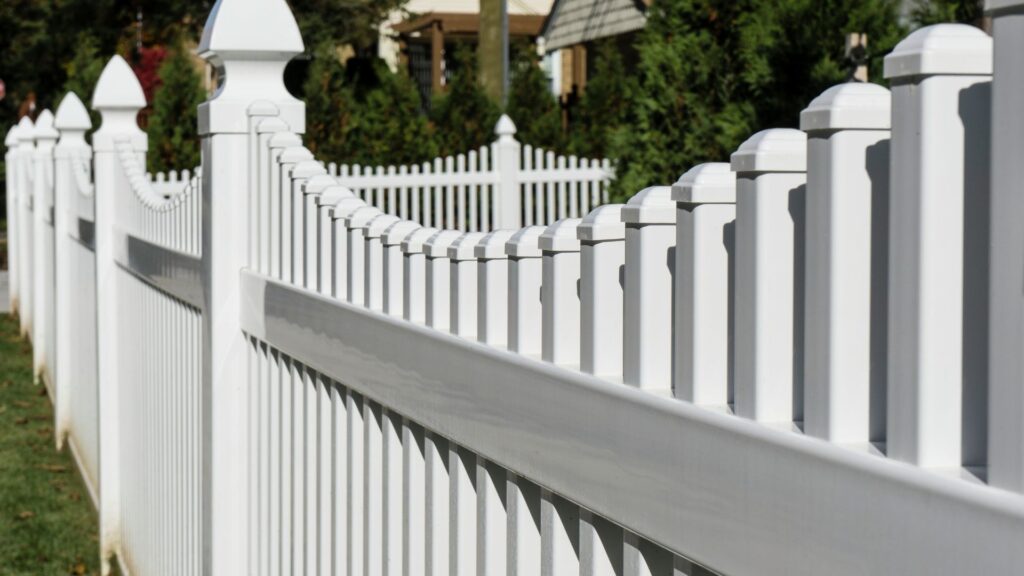
Trends In Fencing Design That Comply With The Rules
1. Popular Fencing Materials and Styles
In recent years, fencing trends in New Zealand have evolved, driven by both aesthetics and functionality. Homeowners are increasingly seeking materials that not only enhance the look of their properties but also stand the test of time and meet regulatory requirements.
- Wooden Fencing: One of the most popular choices remains wooden fencing, particularly timber panels. They provide a natural and classic appearance, making them a favorite for residential homes. The warm, earthy tones of wood blend seamlessly with outdoor environments, which is one reason many homeowners opt for this material. In addition, wood is highly customizable, allowing for different stains, paints, and styles like slatted or board fencing.
- Metal Fencing: For those looking for a more modern, industrial look, metal fences are gaining traction. Materials such as aluminum and steel are not only durable but also low maintenance, making them ideal for coastal areas where weather conditions can be harsh. Metal fences can be crafted into intricate designs, adding a touch of elegance while maintaining their strength and security features.
- Eco-Friendly Fencing Options: As sustainability becomes more important, eco-friendly fencing options are rising in popularity. Bamboo and recycled materials, like composite wood, are sought after for their environmental benefits. These materials are often more durable than traditional wood, reducing the need for frequent replacements or repairs. In addition, eco-friendly fences offer a modern aesthetic that appeals to environmentally conscious homeowners.
These trends reflect a shift toward versatile materials that cater to both practical needs and modern tastes, with many homeowners in New Zealand opting for designs that offer longevity without compromising on style.
2. Balancing Aesthetics and Functionality
When it comes to designing a fence that complies with local building regulations, finding the balance between aesthetics and functionality is crucial. Fencing in New Zealand is subject to specific rules, particularly regarding height limits. However, homeowners don’t need to sacrifice privacy or security to meet these regulations.
- Complying with Height Restrictions: One of the key concerns for property owners is adhering to height restrictions while still ensuring adequate privacy. In many areas, fences are restricted to a maximum height of 1.8 meters along property boundaries. A clever solution to this challenge is to incorporate layered landscaping elements. By strategically placing hedges, tall plants, or shrubs alongside the fence, homeowners can create an extra layer of privacy that doesn’t violate height restrictions.
- Incorporating Screens and Panels: Another popular design feature is the use of decorative screens or slatted panels. These allow for airflow and light while maintaining privacy, especially in areas where you might want to block off a neighbor’s view. Screens can be added to fences to create additional height without obstructing light, keeping the design open yet secure.
- Varying Fence Heights for Functionality: If privacy is needed in certain areas but not others, varying fence heights can be an innovative design solution. For example, a higher fence might be installed near a backyard or pool area where privacy is most important, while a lower fence might be used in the front yard to maintain openness and adhere to local zoning requirements.
These methods ensure that homeowners can design a fence that is not only visually appealing but also fully functional and compliant with local regulations. The key is to use a combination of materials, screens, and landscaping to enhance privacy and security without breaking the rules.

FAQs: About NZ’s Unitary Plan Height Restrictions For Fences
What is the general height limit for fences in NZ under the Unitary Plan?
In most residential areas, the general height limit for fences is 1.8 meters without needing special consent. However, front yard fences typically have a lower limit of around 1.2 meters to ensure visibility and maintain the character of the street.
Do I need resource consent to build a fence higher than 1.8 meters?
Yes, if you plan to build a fence taller than 1.8 meters, you will need to apply for resource consent from your local council. The application will consider factors such as neighborhood aesthetics, privacy, and the potential impact on neighbors.
Are there different height restrictions for fences on corner properties?
Yes, fences on corner properties often have stricter height restrictions to ensure road safety. Typically, councils require lower fences near intersections or driveways to maintain visibility for pedestrians and vehicles.
Can I build a fence higher than 1.8 meters if it’s on top of a retaining wall?
When a fence is built on a retaining wall, the combined height of both structures may still be subject to the 1.8-meter limit. If the total height exceeds this, resource consent will likely be required.
What are the rules for shared boundary fences between neighbors?
For shared boundary fences, the general height limit is still 1.8 meters. It’s important to consult with your neighbor before construction, as boundary fences typically require agreement between both property owners.
Are there exceptions to the 1.2-meter limit for front yard fences
In some cases, councils may allow higher front yard fences if specific privacy or security needs can be justified, but this usually requires resource consent. Always check with your local council before building.
What happens if my fence is higher than allowed and I didn’t get consent?
If your fence exceeds the height limit and you didn’t get the required consent, you could face fines or be required to lower or remove the fence to comply with regulations. It’s important to check local rules before starting construction.
Can I get fined for building a fence that doesn’t comply with the Unitary Plan?
Yes, non-compliance with the Unitary Plan can result in penalties, including fines and the cost of modifying or removing the fence. Always ensure your fence meets the height restrictions and other regulations to avoid these issues.
Are there specific materials I should use to ensure my fence complies with the Unitary Plan?
While the Unitary Plan primarily focuses on fence height, some zones may have aesthetic or material guidelines to maintain neighborhood character. Check local rules or consult a professional for advice on appropriate materials.
How do I apply for resource consent to build a higher fence?
To apply for resource consent, you’ll need to submit detailed plans of your proposed fence, including the height and location, along with any reasons for needing a taller fence (e.g., privacy or security). Your local council will review the application and determine if the fence can be approved based on its potential impact on neighbors and the community.
Conclusion
In conclusion, adhering to the unitary plan’s height restrictions is crucial for avoiding legal complications, maintaining harmonious relationships with neighbors, and ensuring your fence enhances the visual appeal of your property. Homeowners should take the time to visit their local council’s website or consult with a professional to confirm that their fencing project complies with all relevant regulations. By doing so, you not only protect yourself from potential issues but also contribute to the overall aesthetics and functionality of your home. A well-planned fence adds both security and beauty, making the effort well worth it for a structure that stands tall and legally.
About the Author:
Mike Veail is a recognized digital marketing expert with over 6 years of experience in helping tradespeople and small businesses thrive online. A former quantity surveyor, Mike combines deep industry knowledge with hands-on expertise in SEO and Google Ads. His marketing strategies are tailored to the specific needs of the trades sector, helping businesses increase visibility and generate more leads through proven, ethical methods.
Mike has successfully partnered with numerous companies, establishing a track record of delivering measurable results. His work has been featured across various platforms that showcase his expertise in lead generation and online marketing for the trades sector.
Learn more about Mike's experience and services at https://theleadguy.online or follow him on social media:
